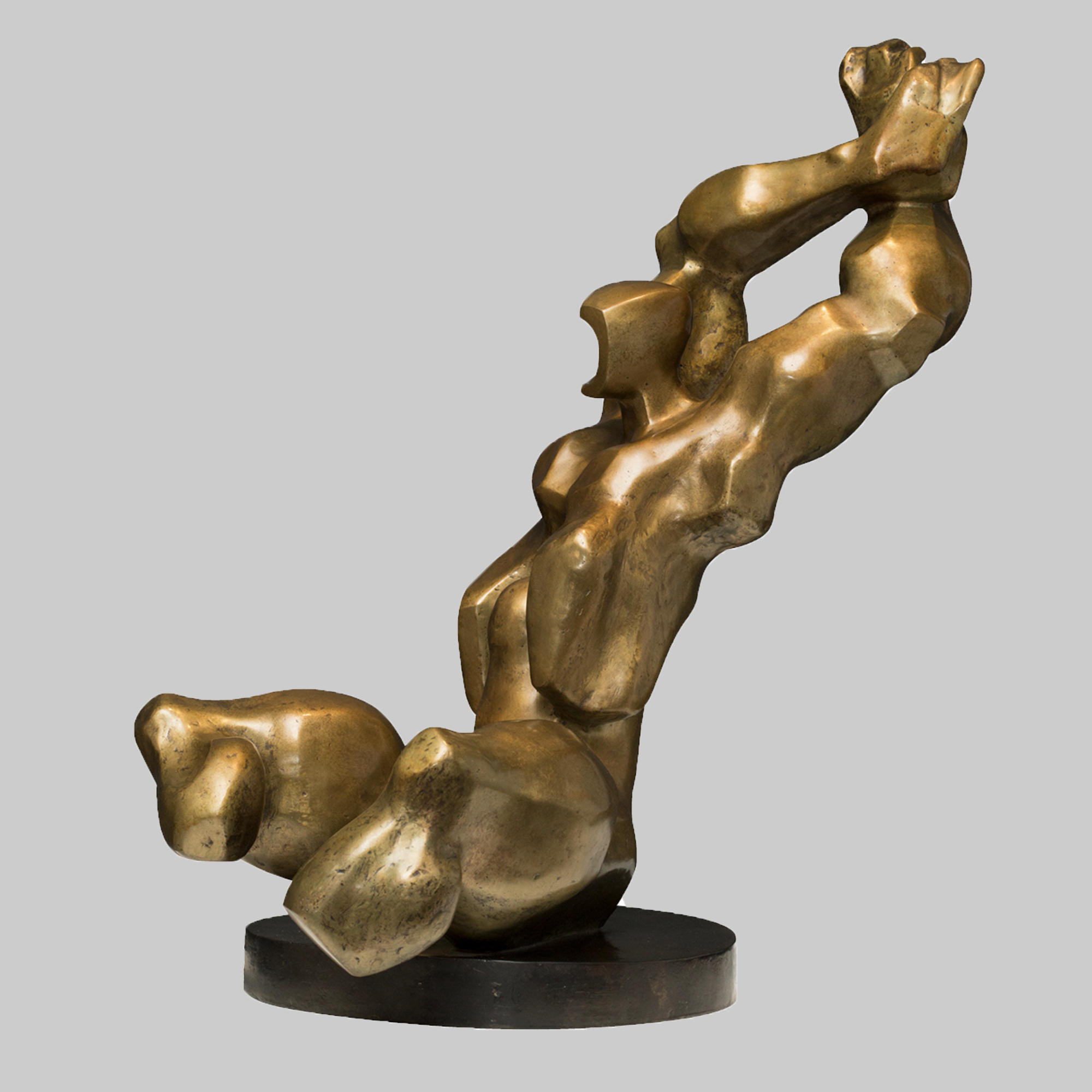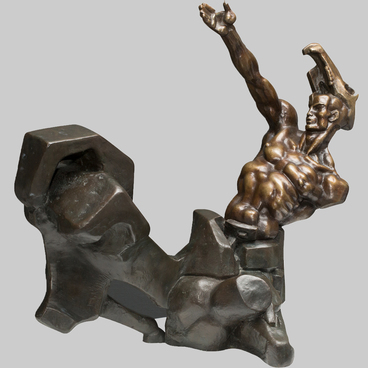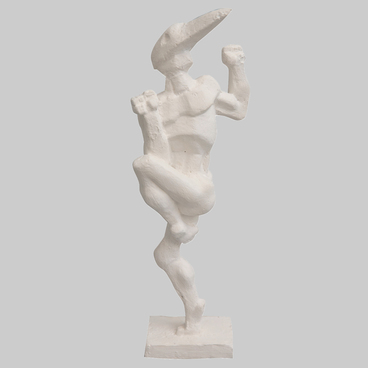Adam was cast in 2008, and it is one of the most expressive works by Ernst Neizvestny. The artist made his first works in this style back in the 60s of the 20th century. The main idea of the sculpture is the incomplete appearance of the image, which lacks small details: fingers, eyes, lips. It seems as if the man has yet to finish ‘sculpting’ himself, making himself perfect.
The sculpture represents a sitting man with his arms raised up and crossed. His head is slightly tilted. The first thing one sees is the structure of the figure: the body is constructed from separate parts, and its arms, legs, head, and phallus are still coarse and unfinished. The first human has a lot of work to do on himself to become a perfect creation.
This work is not an attempt of Ernst Neizvestny to show us the man as a set of organs; on the contrary, here he glorifies the natural integrity of human beings. It is the incompleteness of the human body, its constant refinement and search for new forms that the master emphasises, unlike Renaissance sculptors. Everything is very rough; there is no clearly shaped representation. This is what makes us stop in front of the sculpture, think, find an underlying message.
In his book Art and Revolution: Ernst Neizvestny and the Role of the Artist in the USSR, English art historian John Berger drew attention to the fact that the sculptor produced his most profound works without following conventional concepts. Mystery and hints are part of all his creations, which ensures their success. His works do not demonstrate the excessive clarity that obliterates artistic conceptions.
However, Adam does not carry any prophetic meaning; it reflects the master’s own view of the world, his personal and professional experience. This work cannot be entirely decoded and explained; everyone sees in it something of their own, something very personal. It is monumental and incomplete, solid and nebulous. At the same time, it is a hymn to man, to human mind and harmony.
Ernst Neizvestny inspires us to think about eternal and beautiful things, and about life that is a gift from above.
The sculpture represents a sitting man with his arms raised up and crossed. His head is slightly tilted. The first thing one sees is the structure of the figure: the body is constructed from separate parts, and its arms, legs, head, and phallus are still coarse and unfinished. The first human has a lot of work to do on himself to become a perfect creation.
This work is not an attempt of Ernst Neizvestny to show us the man as a set of organs; on the contrary, here he glorifies the natural integrity of human beings. It is the incompleteness of the human body, its constant refinement and search for new forms that the master emphasises, unlike Renaissance sculptors. Everything is very rough; there is no clearly shaped representation. This is what makes us stop in front of the sculpture, think, find an underlying message.
In his book Art and Revolution: Ernst Neizvestny and the Role of the Artist in the USSR, English art historian John Berger drew attention to the fact that the sculptor produced his most profound works without following conventional concepts. Mystery and hints are part of all his creations, which ensures their success. His works do not demonstrate the excessive clarity that obliterates artistic conceptions.
However, Adam does not carry any prophetic meaning; it reflects the master’s own view of the world, his personal and professional experience. This work cannot be entirely decoded and explained; everyone sees in it something of their own, something very personal. It is monumental and incomplete, solid and nebulous. At the same time, it is a hymn to man, to human mind and harmony.
Ernst Neizvestny inspires us to think about eternal and beautiful things, and about life that is a gift from above.



